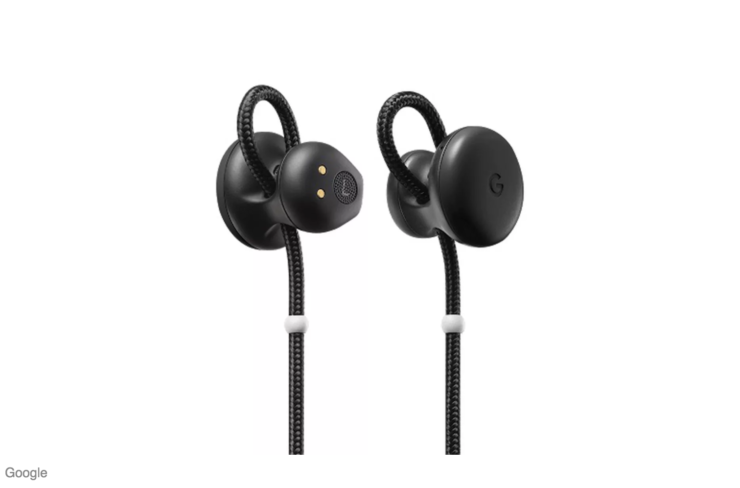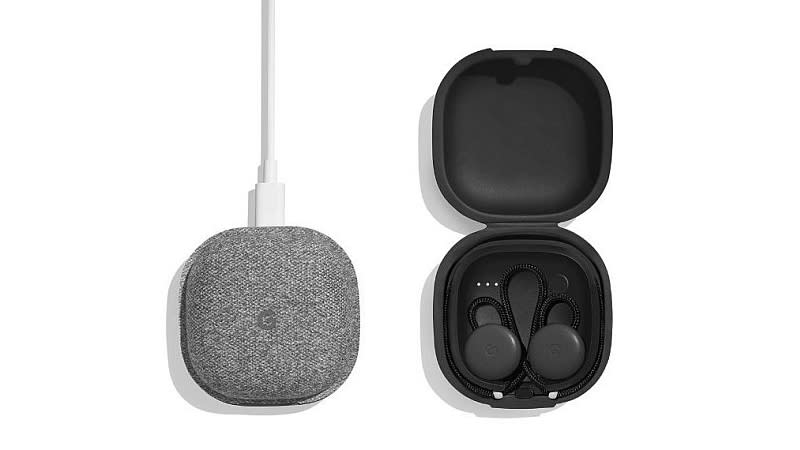Google's Pixel Buds: Wireless earbuds for the extremely tolerant
Google’s Pixel Buds really sounded like they’d be pretty great. Imagine: Google’s version of Apple’s wireless AirPods. Same $160 price, same earbud-recharging carrying case (good for 24 hours’ worth of earbud recharges), and the same ability to let you speak, hands free, to your synthesized voice assistant, without having to pull the phone out of your pocket.
In fact, they sounded better than the AirPods, because the right and left earbuds are reassuringly connected by a wire instead of completely detached. The assistant is Google Assistant, which lots of people find superior to Siri. And above all, Google Translate is built in.
This is it! This is the “Star Trek” communicator! This is the Babel Fish! This is you, going forth into China or Norway or Brazil and having conversations with the locals—they speak, and you hear the English translation in your ears! For $160!
Or not.
As it turns out, the Pixel Buds sound terrific for music and respond well to Assistant requests. But the real-time translation thing is kind of a bust.

Meet the case
The Pixel Buds come in a strange little clamshell case. It’s cheap-feeling plastic, covered with some kind of felt or fabric.

The earbuds themselves last 5 hours on a charge, but the case contains a recharging battery good for a total of 24 hours of earbud power. The case is otherwise a misfire, though. First, there are no indicators on the outside of it. Just to see if it’s charging, or how full the charge is, you have to open it and remove the earbuds. Baaaad design.
Second, the case doesn’t close unless the earbud cable is completely clear of the edges. To do that, you’re supposed to snap the right and left earbuds into their corresponding holes, and then wrap the fabric-covered cable twice around the case prongs, then thread it up the center and tap it flat.
It’s such a production that Google felt the need to include a diagram on the inside of the lid.

Meet the Buds
The Buds are fussy in another way, too.
I have goofy ear cartilage; that’s because I’m missing the antitragus, the bottom cartilage flap that holds most earbuds in. As a result, I can’t keep these things in my ears—they fall out constantly—and when they are in, the hard plastic gets painful after only a few minutes. I haven’t heard other people complain about the Buds falling out, but complaints about the discomfort are common.
The earbud cord goes through a hole in the bottom of the bud and then doubles back down into the top, forming a loop. You’re supposed to tuck this loop into your upper ear cartilage to help hold the thing in place. Unfortunately, the loop’s size tends to slip when you take the buds in or out of your ears, so you wind up having to adjust them often.

All of this means that the Pixel Buds are fussy and inconvenient to get in and out, especially compared to the AirPods (sorry, Apple haters). With those, when you want to listen to something—say, a Facebook video that you decide to play—you just flip open the case’s lid, grab a bud, and slap it in.
Note, too, that these buds aren’t intended to block background noise. That’s good from a safety standpoint—you’ll hear traffic—but not so great for use on planes and downtown, where ambient noise will ever be with you.
Bud Control
Each Pixel Bud is made of two globs of plastic: One that’s supposed to go into your ear, and a larger part that’s touch sensitive (on the right earbud only).
You tap this surface to play/pause music or answer/hang up calls; double-tap it to hear notifications or your upcoming appointments; and you keep your finger pressed on it when you want to talk to Google Assistant.

In that regard, the Buds are terrific: You don’t have to say “OK Google” before every command. Just touch that right bud surface, in the manner of a newscaster saying, “This just in!”
You can also swipe forward on that bud surface to adjust the volume when music is playing. That’s a lot more convenient than having to speak your volume-adjustment commands, as you must on the AirPods.
Google Assistant works exceptionally well with the Buds— if your phone runs Android Marshmallow or a later version (that’s the late 2015 edition). You can listen to notifications, dictate texts and emails, ask for information, place and answer calls, start and stop music—all without ever hauling your phone from your pocket. It’s just incredibly responsive and quick.
The only problem with that touch-sensitive right-bud surface is that it’s hard to avoid touching it during the origami session of putting the buds back into their case. You wind up starting music playback accidentally. Auuugh.
(One last comparison: The Apple AirPods pause music automatically when you remove one from your ear, and resume the music when you put it back in. The Pixel Buds, lacking the “Am I in the ear?” sensor, doesn’t do that, and you really miss it.)
Live translation!?
And now what we’ve all been waiting for: live real-time language translation!
Sort of.
First, it works only with Google’s own Pixel 2 phone. If you have any other Android phone, you’re out of luck.
Here’s how it works.
You open up Google Translate, touch your earbud, and say, “Help me speak French” (or whatever language).
You hand your phone to the French speaker. While pressing your right earbud, you say, “Excuse me. I’ve hurt my foot. Is there a hospital nearby?”
The phone thinks for a moment (assuming you have an internet signal), and then both speaks and displays the French version: “Excusez-moi. Je me suis fait mal au pied. Y a-t-il un hôpital à proximité?”
You point to the little microphone button on the lower-right side of the screen, and gesture for the French speaker to hold it down while speaking. She might say, for example, “Vous devrez prendre le train pour Paris. Il n’y a rien autour d’ici.”
After she does so, you hear, in your earpiece, her answer: “You’ll have to take the train to Paris; there’s nothing around here.”
Repeat from step 3 to continue the conversation.

The translations—well, they’re exactly what you’d see on Google’s Translate web page. A perfect translation is rare; usually, you get the gist; and sometimes, you get hilarious or disastrous misfires. (I told a Chinese-speaking friend, “I love your work! You should get a promotion!” And she heard, in Chinese, “I want your job. You need some improvement.”)
The dirty little secret is that you can do this translation stuff without the Pixel Buds, and without a Pixel phone. Any Android phone running the Google Translate app does all of this already; the only difference is that you’re hearing the English translation in your earbuds instead of from the phone’s speaker.
(If you do have a Pixel phone, another benefit awaits: Automatic pairing when you open the charging case. That’s supposed to make a “Connect?” message pop up on the phone, so a single tap makes the connection. I had a lot of trouble getting that to happen, though; I wound up having to press the Pair button inside the case. Speaking of pairing: You have to pair these things manually every time you switch devices—from phone to laptop, say. It’s not automatic, as it is on the Apple ones.)
Not your best buds
There are lots and lots of fantastic wireless earbuds; here’s my review of 40 of them. Most of them cost less than the Buds, fit more comfortably and solidly, and don’t require any Boy Scout knot-tying every time you put them away.
What they don’t do, of course, is let you touch the right earbud when you want to speak to Google Assistant. But the Pixel Buds command a very steep price—in usability, convenience, comfort, and dollars—for that luxury.
More from David Pogue:
Royal Caribbean’s big bet on new tech
Battle of the 4K streaming boxes: Apple, Google, Amazon, and Roku
iPhone X review: Gorgeous, pricey, and worth it
Inside the Amazon company that’s even bigger than Amazon
The $50 Google Home Mini vs. the $50 Amazon Echo Dot — who wins?
The Fitbit Ionic doesn’t quite deserve the term ‘smartwatch’
Augmented reality? Pogue checks out 7 of the first iPhone AR apps
David Pogue, tech columnist for Yahoo Finance, is the author of “iPhone: The Missing Manual.” He welcomes nontoxic comments in the comments section below. On the web, he’s davidpogue.com. On Twitter, he’s @pogue. On email, he’s poguester@yahoo.com. You can read all his articles here, or you can sign up to get his columns by email.


